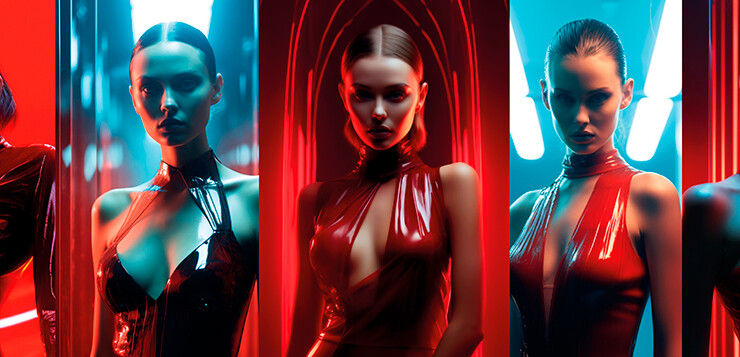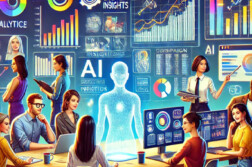The fast development of artificial intelligence has raised worries for many different industries and the design industry is not an exception. This article explores the possibilities of AI in the design industry and the designer’s relationship with this new technology.
First impression
The source of our first impression of what AI is may very well be based on pop culture references from movies such as 2001: Space Odyssey. This kind of science fiction idea about AI has stuck in our minds, but in reality, artificial intelligence is just a machine. It does not have independent thoughts, cannot function without command, and lacks creative thinking. These human attributes are hard to mimic, and our minds are extremely complex networks.
Possibilities of AI
In the past two years, artificial intelligence has taken a giant leap in development. The significant development of this new technology has opened possibilities for many professions to utilize AI as a tool.
AI aided design is becoming an important skill for future designers. Therefore, the second-year students of Smart and Sustainable Design in Häme University of Applied Sciences were invited to join an “AI and Creativity” workshop in November 2023, facilitated by guest lecturers Gabriele Moschin and Andrea Filippi from Italy. The three-day workshop introduced the context and philosophy of artificial intelligence in the creative field and gave the students an opportunity to practice the use of generative AI tools Midjourney and ChatGPT in design work.
Think of AI as a visual tool for imagination. Everything is possible, and everything can be done. Designers must adapt this mindset before they start the process of writing prompts to visualize the imagination as visual content on the screen. As AI workshop guest lecturers Gabriele Moschin and Andrea Filippi noted, “it would be more interesting for this sector to talk not about Artificial Intelligence, but rather about Augmented Imagination”.
AI can also help designers in the rendering part of the design process. Usually, rendering sketches can take a lot of time, and this time could be used to improve some other parts of the product. Vast amounts of rendering-based AI software have started to surface in the design industry. Based on the imported sketch or line drawing, these rendering software produce detailed images from the designer’s work. Certainly, AI can make the design process more time efficient and improve the overall quality of products by allowing designers to focus on more user-related problems and technical parts of the product.
The expressive possibilities of the AI are bound to the designer’s capability to write creative prompts. Most of the generative AI software use prompts to navigate users’ wishes. How exactly? The software has been trained to recognize English words and patterns. They use an existing database to build an image that fits the found data based on the written prompt. Communicating with the machine, on the other hand, can be a challenge, but learning the patterns that AI uses is not impossible, and of course, designers can always use text-generative AI like ChatGPT to help write the prompt. Text-generative AI software can solve communication problems with a designer and other AI software. As established in the Gabriele Moschin’s and Andrea Filippi’s lecture, “AI is to the design sector as the introduction of photography is to the abstract drift of art: a technological advancement has generated new expressive possibilities.”
Limitations of AI
AI image generator tools still have significant limitations and a long road ahead. AI still struggles with human anatomy, particularly hands and feet. Also, facial expressions are usually oversaturated, and generating multiple different people with clear details in the same image can be a challenge for the AI. The design field limitations of AI technology are clearer. Artificial intelligence does not understand the technical details, overall sustainability, and structures of the products. Therefore, designers are holding a valuable place in the product development process. However, if we look at the past, AI has evolved extremely fast. Ten years ago, AI chatbots could not even answer simple questions, and now AI-generated text is hard to spot.
Evolving with new technologies
In conclusion, artificial intelligence is not the end of humankind like science fiction portrays it to be. AI can be a beneficial tool for designers, but the key is not to use it too much. Advice for young designers would be to keep building knowledge, creativity, and critical thinking. Use these skills to elevate your storytelling abilities to make your products more interesting, and then combine your imagination with a generative AI. But remember one thing, do not let machines take away things that make humans unique.
Keep evolving with the AI, that’s the key.
Authors
Samuli Ranta, Design Trainee, HAMK
Anna Huoviala, Head of Degree Programme in Smart and Sustainable Design, HAMK




